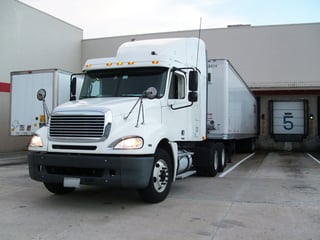 The latest transportation news story the industry has been discussing is all about ELDs. By December 18, 2017, all motor carriers are required to install and use electronic logging devices, or ELDs. This rule was published in December 2015 with the intent to create a safer work environment for drivers and to allow them to more easily track Hours of Service (HOS) compliance. While addressing safety concerns and increasing efficiencies are great things, the ELD mandate will have other effects on the transportation industry. As a non-asset based transportation provider, we won't have to deal with the physical process of installing the devices, but we will have to deal with the repercussions that this new policy will bring to the industry.
The latest transportation news story the industry has been discussing is all about ELDs. By December 18, 2017, all motor carriers are required to install and use electronic logging devices, or ELDs. This rule was published in December 2015 with the intent to create a safer work environment for drivers and to allow them to more easily track Hours of Service (HOS) compliance. While addressing safety concerns and increasing efficiencies are great things, the ELD mandate will have other effects on the transportation industry. As a non-asset based transportation provider, we won't have to deal with the physical process of installing the devices, but we will have to deal with the repercussions that this new policy will bring to the industry.
Impact on Highway Capacity
The biggest change is the impact ELDs will have on highway capacity. By more strictly monitoring HOS compliance, the amount of time drivers can legally be behind the wheel will be more valuable, thus driving up highway/over the road rates. The raising of rates will inevitably push customers to want a more cost-effective mode, namely intermodal. Expect intermodal volume to spike.
Compounding of Driver Shortage
Many drivers are or will be displeased with being so closely monitored while doing their jobs. We're all aware that there has been a pretty consistent annual shortage of truck drivers - expect that number to rise as drivers become frustrated and decide to pursue other lines of work.
No More Number Fudging
This point goes hand in hand with the previous one. ELDs show exactly how many hours a driver has been behind the wheel. If a driver has been struck in traffic, their idle time counts under HOS Regulations and therefore means that they are obligated to pull over once they reach their maximum HOS, even if they have yet to drop off their shipment. Many carriers now, who may be only minutes from pickup or delivery shut down because their electronic log is showing that they are out of time. Therefore they need to be some place where they can park their truck in order to get their time back. Previously, a driver who was close in time would still go and make their pick up or delivery and then shut down. ELDs are now forcing the pickup and/or delivery into the next day which creates a snowball effect on the next day’s loads. The use of paper logs gave drivers leeway to alter HOS to their benefit. ELDs will put an end to that and will inevitably contribute to driver frustration.
Costs of Implementing Technology
While a lot of the larger carriers have already complied with the ELD mandate, many smaller carriers are waiting until the last minute to come on board due to the costs associated with installing the ELD technology (roughly $500/truck). They will probably go out of business either because they can’t afford the new technology or the new technology is going to keep them from running the extra hours illegally that they now do in order to stay financially sound. This will also affect drivers' wages if they will not be able to put as many miles on their truck per week as they used to.
Again, we are all for following the law and ensuring that carriers are following safety protocol, but ELDs will be a difficult change for the transportation industry to adapt to. With less than one year until the deadline, we are already seeing some of the effects of the new mandate and hope that our smaller carrier partners can weather the transition.

